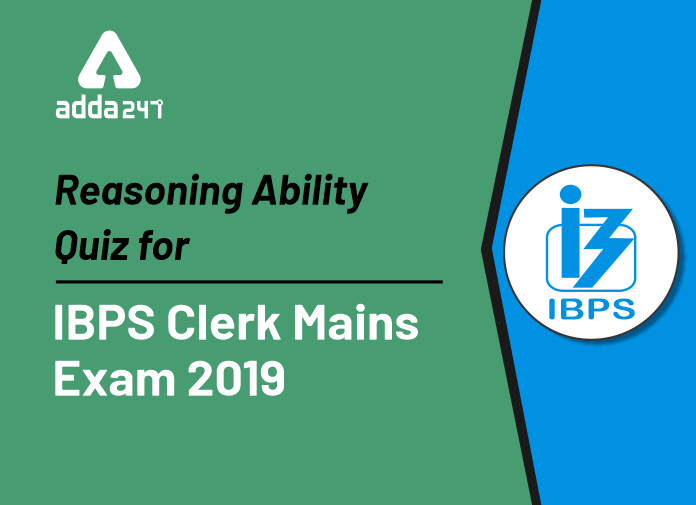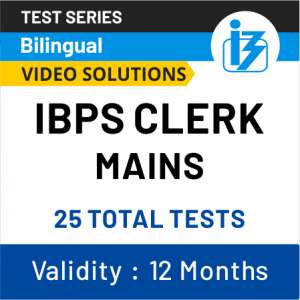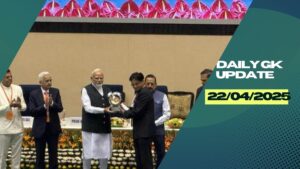Reasoning section tests your mental ability to deal with a question in a minimum of time. Reasoning test the common sense which is yet uncommon. Level of the section is increasing in leaps and bounds. Attempt daily Reasoning Quizzes and follow a proper strategy and study plan for the IBPS Clerk main exam 2019 provided on Bankersadda. Logic and rules would not be difficult if the section is practiced well. This section eventually effects the number of question one can attempt within a stipulated time. Today’s quiz is based on the important topics to be asked in the IBPS Clerk Main exam 2019
Direction (1-5): Study all the information carefully and answers the following questions given below:
There are seven persons A, B, C, D, E, F and G lives in a seven-floor building but not necessarily in the same order. The ground floor is numbered 1; the first floor is numbered 2 and so on until the topmost floor is numbered seven. All persons are like different colors i.e. Pink, Orange, Red, White, Green, Yellow and Blue, but not necessarily in the same order.
D lives on the 5th floor but does not like Orange and Pink color. Two floors gap between A and F, who lives below of A. One floor gap between G and the one who likes Red color. The number of floors above of G is same as the number of floor below to B. G lives one of the above floor of 4th floor. More than two floors gap between D and the one who likes Green color. E likes blue color. The one, who likes Red color lives immediate above of the one who likes Blue. D does not like Yellow color. Two floors gap between the one who likes Yellow and one who liks White. G does not like Orange. Number of floors gap between F and the one who likes Blue is one more than the gap between D and the one who likes Pink.
Q1. How many floors gap between E and G?
(a) One
(b) Two
(c) Three
(d) Four
(e) None of these
Q2. Which of the following color does B like?
(a) Pink
(b) Red
(c) Yellow
(d) Green
(e) Can’t be determined
Q3. Who among the following person lives on the top floor?
(a) A
(b) G
(c) C
(d) D
(e) None of these
Q4. Four of the following five are alike in a certain way and hence they form a group. Which one of the following does not belong to that group?
(a) C – Orange
(b) B-2nd floor
(c) D-White
(d) F-Green
(e) A-3rd floor
Q5. How many floor gaps between D and the one who likes Pink color?
(a) One
(b) None
(c) Two
(d) Four
(e) More than four
Directions (6-10): Study the given information and answer the questions given below:
A word and number arrangement machine when given an input line of words and numbers rearranges them following a particular rule in each step. The following is an illustration of an input and rearrangement.
Input: most 17 part 48 of 29 country 54 become 35 advance 36
Step I: advance most part 48 of 29 country 54 become 35 36 18
Step II: 35 advance most part 48 of 29 country 54 35 18 become
Step III: country 35 advance most part 48 of 54 35 18 become 30
Step IV: 47 country 35 advance part of 54 35 18 become 30 most
Step V: of 47 country 35 advance part 54 18 become 30 most 36
Step VI: 53 of 47 country 35 advance 18 become 30 most 36 part
And Step VI: is the last step of the rearrangement of the above input.
As per the rules followed in the above steps, find out in each of the following questions the appropriate step for the given input.
Input: there 8 will 7 be 24 no 29 significant 16 change 19
Q6. In which step the elements ‟24 29 significant‟ found in the same order?
(a) Step I
(b) Step II
(c) Step III
(d) Step V
(e) Step VI
Q7. In step IV, which of the following words/numbers would be at 6th to the left of 3rd from the right end?
(a) 23
(b) be
(c) 7
(d) no
(e) None of these
Q8. How many step required completing the above arrangement?
(a) Three
(b) Four
(c) Six
(d) Seven
(e) Five
Q9. Which of the following would be the step V after arrangement?
(a) there 24 no 7 be will 16 8 change 20 significant 30
(b) be there 8 will 24 no 29 significant 16 change 19 8
(c) there 23 no 7 be will 16 8 change 20 significant 29
(d) 15 no 7 be there will 24 29 8 change 20 significant
(e) None of these
Q10. What is the difference between the number which is third from left in Step IV and the number which is second from right in Step VI?
(a) 23
(b) 7
(c) 30
(d) 15
(e) None of these
Directions (11-13): In the following questions, the symbols ¥, #, ®, Ω and © are used with the following meaning as illustrated below-
‘P#Q’ means ‘P is neither greater than nor equal to Q’
‘P©Q’ means ‘P is neither equal to nor smaller than Q’
‘P®Q’ means ‘P is neither smaller than nor greater than Q’
‘PΩQ’ means ‘P is not smaller than Q’
‘P¥Q’ means ‘P is not greater than Q’
Now in each of the following questions assuming the given statement to be true, find which of the three conclusions I, II and III given below them is/are definitely true and give your answer accordingly
Q11. Statements: U Ω W, W © C, C ¥ A, Y © C
Conclusions:
I. U © Y
II. C # U
III.Y © U
(a) None is true
(b) Only II is true
(c) Only I and II are true
(d) Only II and III are true
(e) All are true
Q12. Statements: W © S ¥ C ® U Ω N
Conclusions:
I. N # C
II. U # W
III. S ® N
(a) None follows
(b) Only I is true
(c) Only III is true
(d) Either I or II is true
(e) All are true
Q13. Statements: U Ω W, W © C, C ¥ A, Y © C
Conclusions:
I. U © C
II. C # A
III.U ® A
(a) Only I is true
(b) Only II is true
(c) Only I and II are true
(d) Only II and III are true
(e) All are true
Q14. Statement: Non-banking entities operating automated teller machines, known as white label ATM operators, are struggling to meet the targets set by the Reserve Bank of India.
Which of the following is the reason for the above statement?
(a) Non-bank entities are unable to find sponsor banks of such ATMs in small towns.
(b) White label ATM (WLA) operators do not fall directly under banking regulations.
(c) High transaction fees are charged by the WLA entities.
(d) The operating cost in the cities is high.
(e) There is stiff competition in the market from public sector banks.
Q15. Statement: To tone up the bureaucratic apparatus and weed out officials of doubtful integrity and efficiency, the government has asked all its departments to identify such public servants and move proposals for their premature retirement.
Which of the following can be concluded from the above statement?
(a) There will be voluntary retirement for the person who skips the office for a long time.
(b) Only Government service is made for those who can perform.
(c) Negligence of work in the office will lead to premature retirement.
(d) Efficiency of the government service will increase.
(e) Only (c) and (d)
Solution:
Sol.(1-5):

S1. Ans. (b)
S2. Ans. (c)
S3. Ans. (c)
S4. Ans. (e)
S5. Ans. (b)
Sol.(6-10):
Let us understand the Logic behind this Question and let’s understand how to solve it.
When we see the each step, then we can find that there is both number and words are arranged in each Step. (1) For words arrangement- Words are arranged according to ascending order as in English dictionary. In first step the words which come first according to English dictionary arranged first to extreme left. And in second step next word is to be arranged in extreme right. And this process is continued in further
Step. (2) For number arrangement- There are three odd numbers and three even numbers. In first step lowest odd number arranged in extreme right and in second step lowest even number is to be arranged in extreme left and this process is continued in further step. (Each odd number is added by one (+1) while they are arranged and one is subtracted by each even number (-1) while they are arranged).
Input: there 8 will 7 be 24 no 29 significant 16 change 19
Step I: be there 8 will 24 no 29 significant 16 change 19 8
Step II: 7 be there will 24 no 29 significant 16 19 8 change
Step III: no 7 be there will 24 29 significant 16 8 change 20
Step IV: 15 no 7 be there will 24 29 8 change 20 significant
Step V: there 15 no 7 be will 24 8 change 20 significant 30
Step VI: 23 there 15 no 7 be 8 change 20 significant 30 will
S6. Ans. (c)
S7. Ans. (b)
S8. Ans. (c)
S9. Ans. (e)
S10. Ans. (a)
S11. Ans.(b)
Sol. I. U © Y(false) II. C # U (true) III.Y © U(false)
S12. Ans.(a)
Sol. I. N # C (false) II. U # W(false) III. S ® N (false)
S13. Ans.(a)
Sol. I. U © C (true) II. C # A (false) III.U ® A (false)
S14. Ans.(a)
Sol. White label ATM (WLA) operators need a sponsor bank to load and mange cash in each WLA. So, (a) is a valid option.
S15. Ans.(e)
Sol. Officials are being made to retire prematurely. The retirement is not voluntary. So a) will be ruled out. Because of the word only b) will not be considered. The decision taken by the government will lead to improvement in government services and at the same time any negligence at workplace will lead to premature retirement. So, only c) and d) will follow.
If you are preparing for IBPS Clerk Mains Exam, then you can also check out a video for Reasoning below:
You may also like to read:
Register here to get study materials and regular updates!!
All the Best BA’ians for IBPS Clerk Mains!





 GA Capsule for SBI Clerk Mains 2025, Dow...
GA Capsule for SBI Clerk Mains 2025, Dow...
 The Hindu Review October 2022: Download ...
The Hindu Review October 2022: Download ...
 Daily Current Affairs 22nd April 2025, I...
Daily Current Affairs 22nd April 2025, I...





